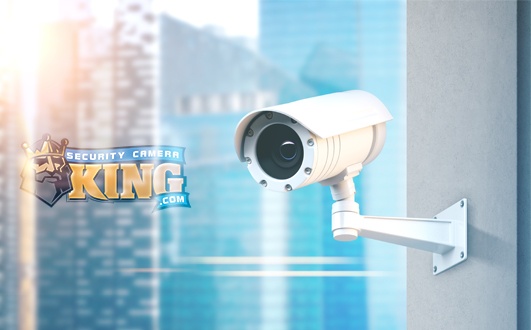CCTV Terminology Continued – 5 Terms.
Hey everyone, we’re back with another CCTV Terminology Article, bring you 5 more glossary terms from the CCTV industry! We know how hard it can be to keep up with every new buzzword or tech term out there, and so we thought why not condense a few of them together! Don’t forget to check out our last two articles on the subject as well. Today we’re going to run through some of the most relevant, and Common CCTV Terms. The goal is to provide insight to those who might be new, and a refresher for those who have been in and out of the CCTV field.
-DVR-
One of the oldest items on today’s list of CCTV Terminology is the DVR. DVR is short for Digital Video Recorder and is the most common type of recording device currently installed across the world for backing up CCTV footage. A DVR works with mostly COAX cameras, a term we covered in one of our previous CCTV Terminology articles. These cameras pass their video data directly to the DVR via a COAX cable. The DVR then does all the encoding and writing to hard drive disks located on the DVR. Most modern DVRs can use multiple video signal types, and can even accept some IP cameras on the same network.
-NVR-
NVRs aren’t super new, but compared to DVRs are a far newer technology in the CCTV world. Like a DVR, an NVR is a type of recorder but is different in that it is a Network Video Recorder. NVR is one of the CCTV Terminpoly items on his list you’re going to hear a lot more about as time goes on. While DVRs may still be more common, the best most advanced analytics features are available on NVRs and IP cameras. Unlike DVRs, which take COAX cameras but can often also accept IP cameras, NVRs only work with IP cameras.
-Main Stream-
When your recorder accepts the information from your cameras, it can do many things with this. One of the most common CCTV Terminology items we get asked about is Main Stream. The Mainstream is one of the recording/viewing streams your recorder can apply to the incoming video data from your cameras. Main Stream is intended to be the highest possible quality encoding of your on-site cameras. When you record your video to the hard disk, it is the mainstream that gets written to that disc by your DVR or NVR. Generally, whatever you desire your recorded resolution to be within the spec of your cameras, you’ll want to set that on your MainStream settings. It’s also possible to view the mainstream via live feed, but often this must be done by enlarging a single camera window or calling for it from software such as Elite Smart PSS manually.
-Sub Stream-
When transmitting data from your recorder locally, or over the web, this consumes available bandwidth on a network and/or ISP-provided internet connection when remote viewing. Additionally, even from your DVR or NVR’s local display, a live view of the camera requires encoding/decoding work. The amount of bandwidth used is directly correlated to the bitrate and resolution of the camera system. Since your mainstream is going to be set to the highest quality you desire, it’s good to have your sub stream enabled and set to a much lower resolution and bitrate. This way far less bandwidth or data is used, and less workload is put on the recorder when cameras are all viewed together, or on a smartphone so that their images are smaller. You won’t2.4 ghz max see a visual difference at that size, and you’ll save data.
-IR-
IR is our final word on our CCTV Terminolgylist for today. IR is short for infrared and is a huge part of almost every camera available today. Save for a few cameras built without it usually for specific purposes, Infrared illumination is a much-needed and very common part of CCTV. When it’s too dark outside for normal light sources to project light, your camera can project an IR beam and illuminate the area on a light wavelength invisible to the human eye. In order to pick up IR footage, the camera will have to be monochrome which means the image will be black and white.
Thanks for joining us today as we talked about 5 common CCTV terms! Well be posting more Terminology articles here soon, so stay tuned. Check out the additional links for more info on some of these ideas! For any questions on product compatibility, availability or any other information don’t hesitate to give our Sales Pro’s a call at 561-288-5258 . Don’t forget to subscribe to our YouTube Channel for more Tutorials and CCTV info. Until Next time, Stay Safe!
Related: What’s the difference between DVR and NVR?
Related: What’s the difference between H264 and H265?
Related: IP PTZ Security Cameras – All There is to Know
Related: Resolution, and why does it matter?
Related: What are active deterrence cameras?
Find Us On: Facebook | Twitter | YouTube












